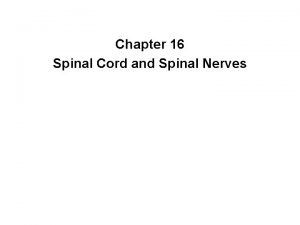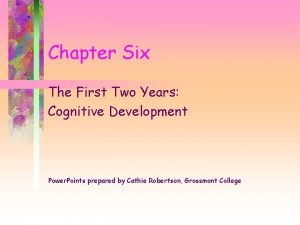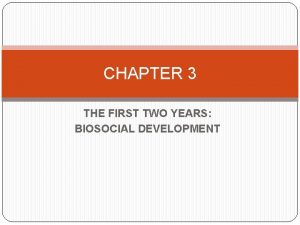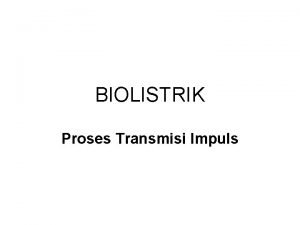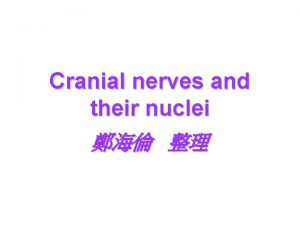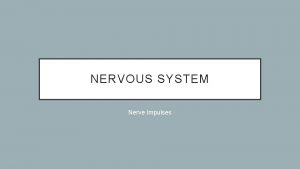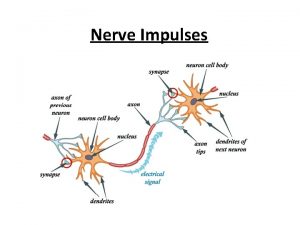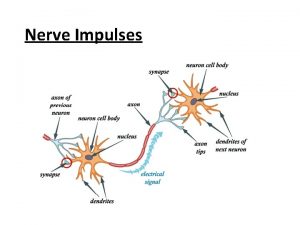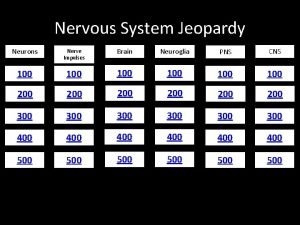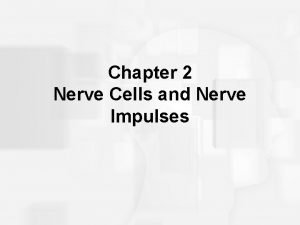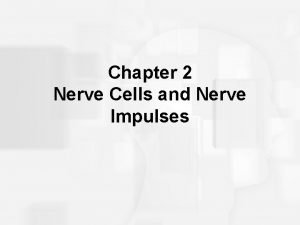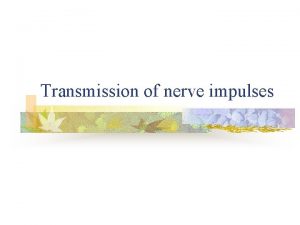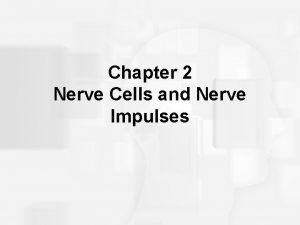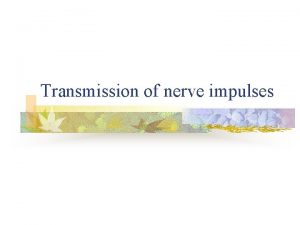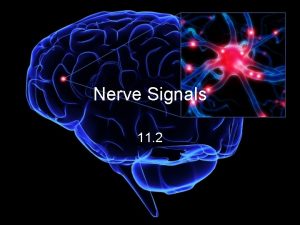Nerve Impulses THE NERVOUS SYSTEM Nerve Impulses The















- Slides: 15

Nerve Impulses THE NERVOUS SYSTEM

Nerve Impulses The nervous system uses Nerve Impulses to convey information. Nerve impulses are electrical signals, which can be measured in millivolts (m. V). Measures the electric potential difference (voltage) between the inside and the outside of the axon.

Resting Potential Difference The axon is a memborous tube filled with axoplasm. When an axon is not conducting an impulse, the inside of the axon is negatively charged compared to the outside of the axon. Called resting potential because the axon is not conducting an impulse.


Action Potential Difference The rapid change in charge across an axomembrane and a nerve impulse occurs. This travels along the length of the axon. When a stimulus occurs, the axomembrane will detect and the charges will travel along the membrane. The stronger the stimulus, the more time the axon will ‘fire’ or charges will travel.

Transmission across a Synapse Every axon branches into fine endings, which are tipped by a small swelling called an axon terminal. These terminals lie very close to either the dendrite or the cell body of another neuron. This close proximity is called a synapse. 2 neurons at a synapse don’t physically touch each other.

Transmission across a Synapse The gap that separates each neuron is called the synaptic cleft. Communication between the 2 neurons at a synapse is carried out by molecules called neurotransmitters. Once signalled by an impulse, the neurotransmitters will travel across the synaptic cleft to the next neuron and bind with it’s membrane.

The bind is formed because of receptor proteins on the membrane that bind with the neurotransmitter.


Response The response of the neurotransmitter binding with the protein outer layer of the neuron is 1 of 2: 1) Excitation – Causing an action to happen 2) Inhibition – Stopping an action from happening

Nerve Games Telephone Nerve impulse circle


Types of Neurotransmitters Acetylcholine (ACh): Found in both the CNS and the PNS. • Norepinephrine (NE): Produced by the adrenal medulla and initiate the body’s response to an emergency situation – Fight or Flight


 Incoming sensory impulses and outgoing motor impulses
Incoming sensory impulses and outgoing motor impulses Transmits nerve impulses
Transmits nerve impulses Transmits nerve impulses
Transmits nerve impulses What are the characteristics of nervous tissue
What are the characteristics of nervous tissue Fundamentals of the nervous system and nervous tissue
Fundamentals of the nervous system and nervous tissue Neuron processes
Neuron processes Social impulses foster infant language
Social impulses foster infant language Social impulses foster infant language
Social impulses foster infant language Transmission of electrical impulses
Transmission of electrical impulses Nervous system and digestive system
Nervous system and digestive system Endocrine system vs nervous system
Endocrine system vs nervous system Endo crine gland
Endo crine gland Endocrine system
Endocrine system Trigeminal nerve which cranial nerve
Trigeminal nerve which cranial nerve Chemical messengers of the nervous system
Chemical messengers of the nervous system Segmentation nematoda
Segmentation nematoda


